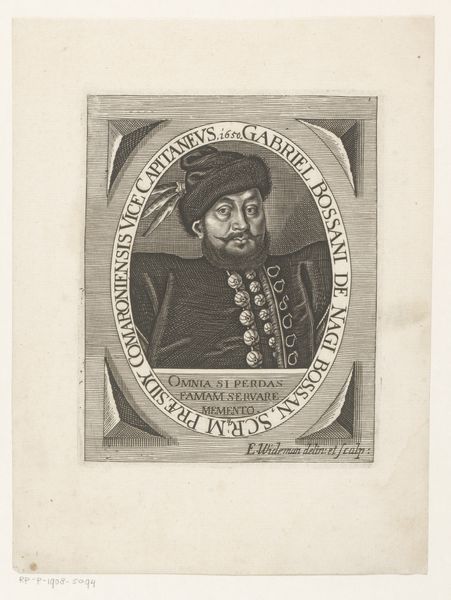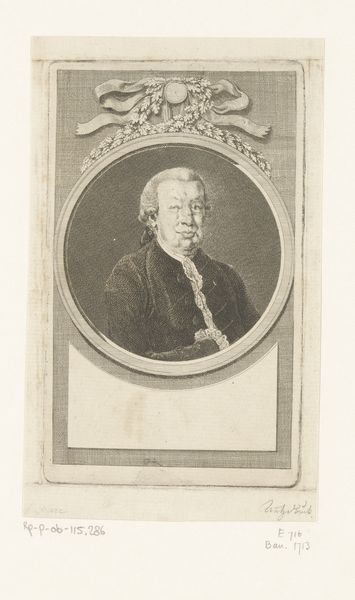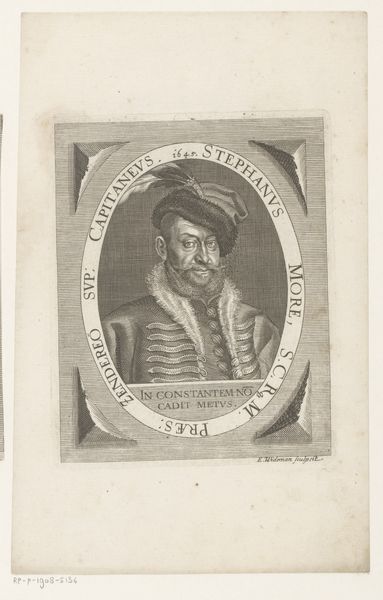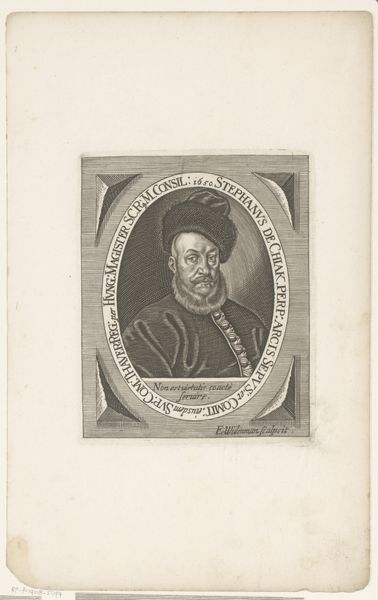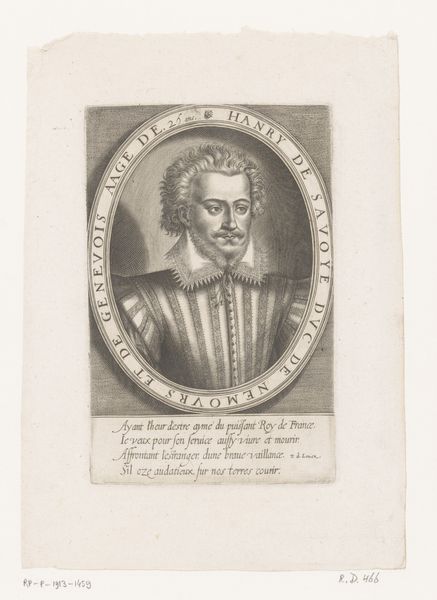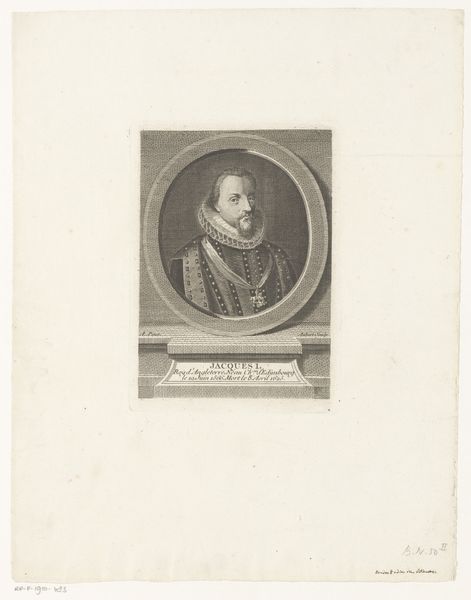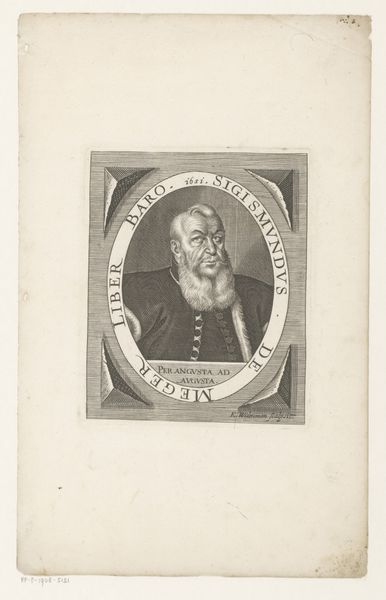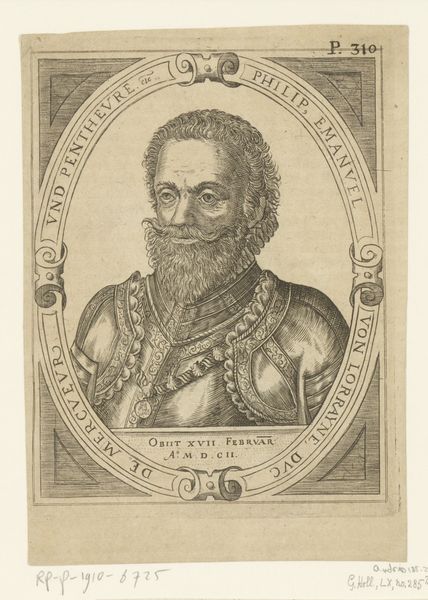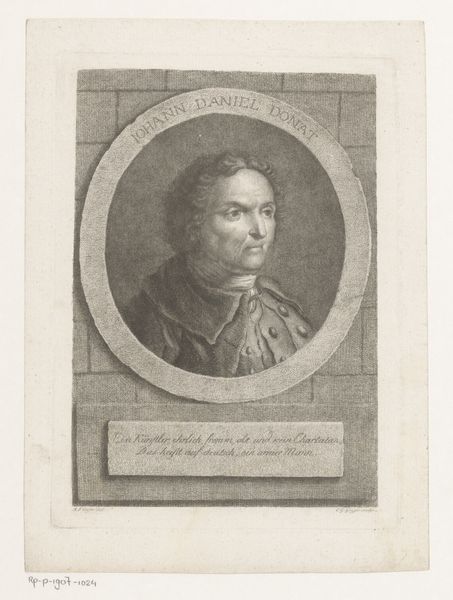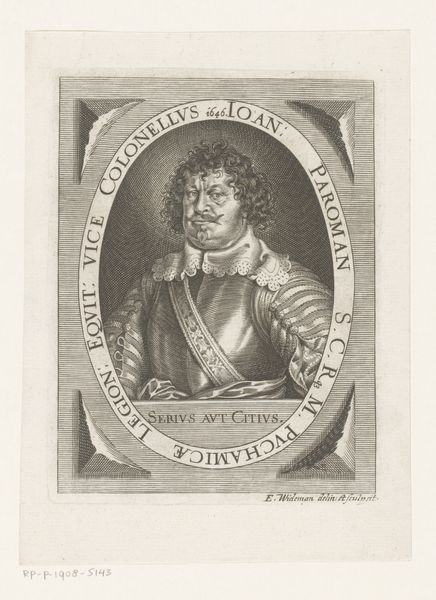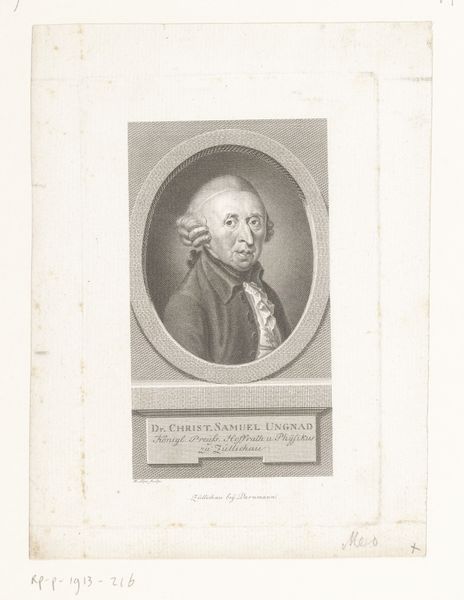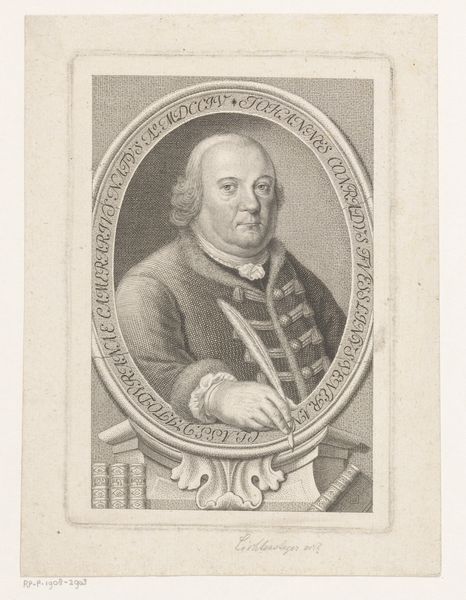
print, engraving
#
baroque
# print
#
old engraving style
#
line
#
history-painting
#
engraving
Dimensions: height 153 mm, width 120 mm
Copyright: Rijks Museum: Open Domain
This print of Nicholas Nadányi was made by Elias Widemann in 1640, using engraving. This is an intaglio printmaking process, where the image is incised into a metal plate, and then filled with ink, and transferred to paper with a printing press. Look closely, and you can see how Widemann created this portrait through networks of lines and dots. The technique speaks to the era’s increasing reliance on reproducible imagery. The print could circulate widely, enhancing Nadányi's reputation as a military leader. The evenness of the engraved line also lends a certain quality to the image, a sense of objective, reproducible truth. The frame of the image, with its crisp geometry, reinforces the idea that this is a portrait of someone of consequence, of someone important within a larger system. The inscriptions surrounding the portrait also add to this sense of formality and power. Engraving was essential for disseminating information and solidifying social hierarchies. By recognizing its role, we understand that this portrait is not just a depiction, but a piece of a much larger cultural puzzle.
Comments
No comments
Be the first to comment and join the conversation on the ultimate creative platform.
